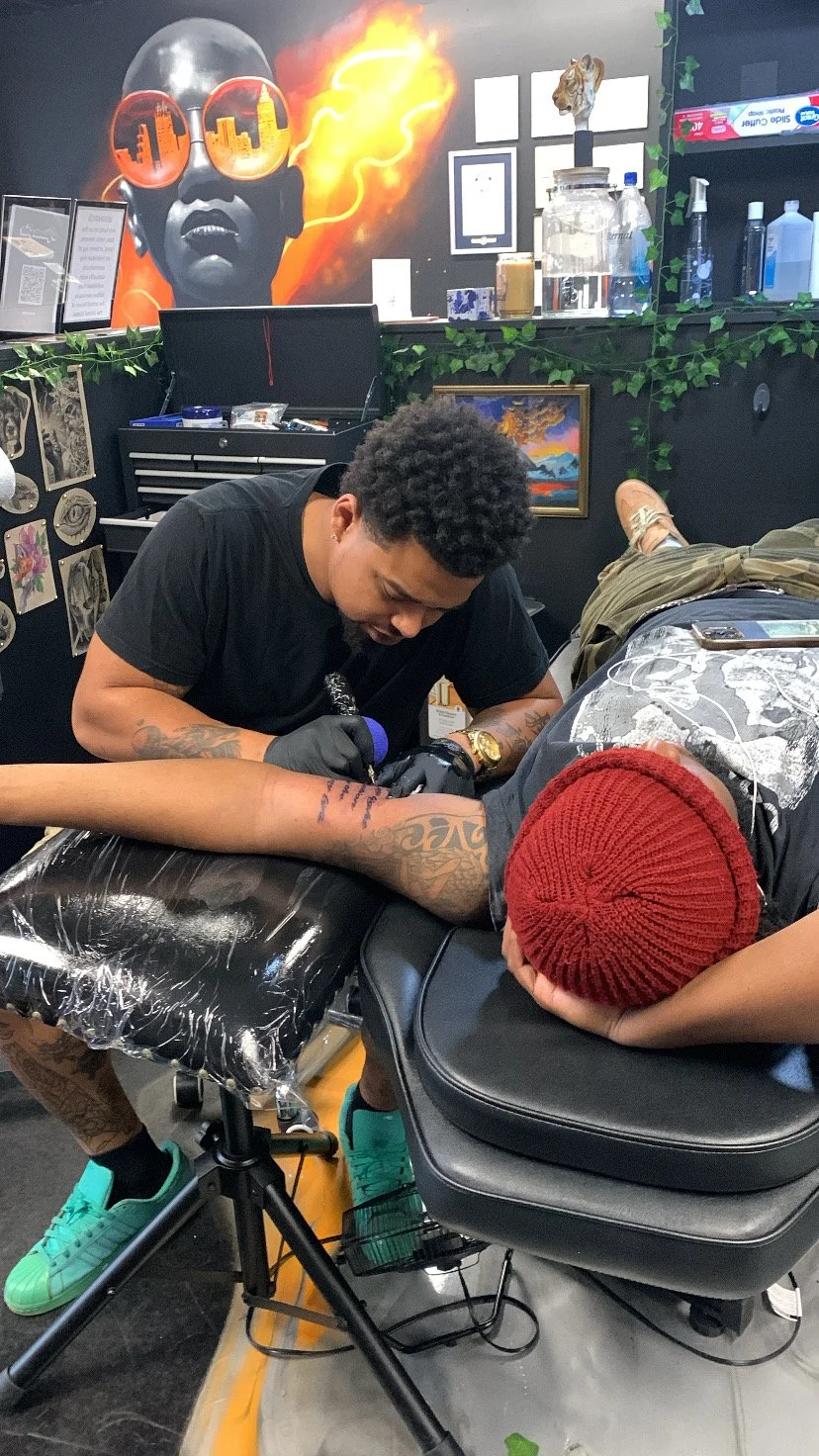Tattoo Pain Chart: Understanding Placement & Pain Levels
Getting a tattoo is an exciting experience, but one of the biggest concerns people have before walking into a tattoo studio is: How much is this going to hurt? The truth is, tattoo pain levels vary depending on placement, skin sensitivity, and your own tolerance. At Atlanta Ink, South, we want to make sure you feel confident and prepared before starting your tattoo journey. That’s why we’ve created this detailed tattoo pain chart guide to help you understand where tattoos hurt the most, where they hurt the least, and how to prepare for the process.
Factors That Influence Tattoo Pain
Before diving into specific body placements, it’s important to understand that tattoo pain isn’t just about the location. Several factors affect how intense the pain might feel:
Skin Thickness & Nerve Endings – Areas with more nerve endings or thinner skin tend to be more painful.
Muscle vs. Bone – Tattoos directly over bone or joints generally hurt more than fleshy, muscular areas.
Individual Pain Tolerance – Everyone processes pain differently. What feels intense to one person may feel tolerable to another.
Tattoo Size & Duration – Longer sessions can lead to increased discomfort due to skin irritation and fatigue.
Artist Technique – A skilled tattoo artist, like those at Atlanta Ink, South, knows how to work efficiently and minimise unnecessary discomfort.
Tattoo Pain Chart: From Least Painful to Most Painful Areas
Below is a breakdown of common tattoo placements, organised by general pain levels:
Least Painful Areas
These spots have more muscle and fat, fewer nerve endings, and thicker skin—making them ideal for first-time tattoo clients.
Outer Upper Arm – A popular location with low pain, great for larger designs.
Thigh (front & outer) – Ample muscle cushioning helps dull the sensation.
Calves – The fleshy lower leg area is relatively comfortable for most.
Shoulders – One of the easiest spots to sit through.
Moderately Painful Areas
These areas are manageable but may cause some discomfort depending on your tolerance.
Forearm – A prime tattoo location, moderately painful but tolerable.
Upper Back – Usually easy to handle unless close to the spine.
Chest (outer area) – Muscle tissue helps reduce pain, but closer to the sternum can sting.
Shins – Thin skin over bone makes this area sharper in sensation.
Most Painful Areas
If you’re new to tattoos, you might want to think twice before starting here. These spots have thin skin, many nerve endings, or direct exposure to bone.
Ribs – Infamously one of the most painful tattoo areas due to thin skin and constant movement from breathing.
Spine – Bony and nerve-dense, making for intense discomfort.
Hands & Fingers – Painful due to nerves and minimal padding.
Feet & Ankles – Sharp, stinging sensation with little muscle or fat.
Armpit – Considered one of the top most painful spots.
Tattoo Pain Chart Visual Reference
If you’re a visual learner, imagine the pain levels as a gradient:
Green Zones (Low Pain): Outer arm, thigh, calves, shoulder.
Yellow Zones (Medium Pain): Forearm, chest, upper back, shins.
Red Zones (High Pain): Ribs, spine, hands, feet, armpit.
At Atlanta Ink, South, our artists will guide you through choosing the right placement—not just for the look of the tattoo, but also based on your comfort level.
How to Manage Tattoo Pain
Even if you’re worried about the pain, there are proven ways to make the experience easier:
Before Your Appointment
Stay Hydrated – Healthy skin takes ink better and hurts less.
Get Plenty of Rest – A well-rested body handles pain more effectively.
Avoid Alcohol & Blood Thinners – These can thin your blood and increase bleeding.
Eat a Good Meal – Keeps blood sugar steady and reduces dizziness.
During the Tattoo Session
Breathe Steadily – Helps calm nerves and reduce tension.
Bring Distractions – Music, podcasts, or a friend for support.
Don’t Fidget – Staying still makes the process smoother and faster.
Communicate with Your Artist – If you need a break, let them know.
Aftercare for Pain & Healing
Follow Aftercare Instructions – Proper healing reduces prolonged soreness.
Moisturise Gently – Keeps the skin from drying out and cracking.
Avoid Sun & Water Immersion – Protects the tattoo while healing.
Best Tattoo Placements for Beginners
If you’re new to tattoos, here are some recommended areas that balance visibility, style, and comfort:
Outer arm
Thigh
Calf
Shoulder
These areas typically cause the least amount of pain while still allowing space for creative, detailed designs.
Why Choose Atlanta Ink, South for Your Tattoo
At Atlanta Ink, South, our mission is not only to give you an incredible tattoo but also to make the experience as smooth and comfortable as possible. Here’s what sets us apart:
Expert Artists with years of professional tattooing experience.
Clean, Safe Studio that exceeds health and safety standards.
Personalised Consultations to help you choose the best placement and design.
Supportive Atmosphere where your comfort and confidence come first.
Final Thoughts: Pain is Temporary, Art is Forever
While tattoo pain is real, it’s temporary—and the result is permanent art you’ll carry with pride. By understanding the tattoo pain chart and preparing ahead of time, you can minimise discomfort and fully enjoy the experience.
If you’re ready to get your next tattoo in a professional, welcoming studio, come visit us at Atlanta Ink, South. We’ll help you every step of the way.
Book Your Appointment Today
📍 Visit us at Atlanta Ink, South for a professional consultation. Whether it’s your first tattoo or your tenth, our skilled artists will guide you through placement, pain expectations, and aftercare.


